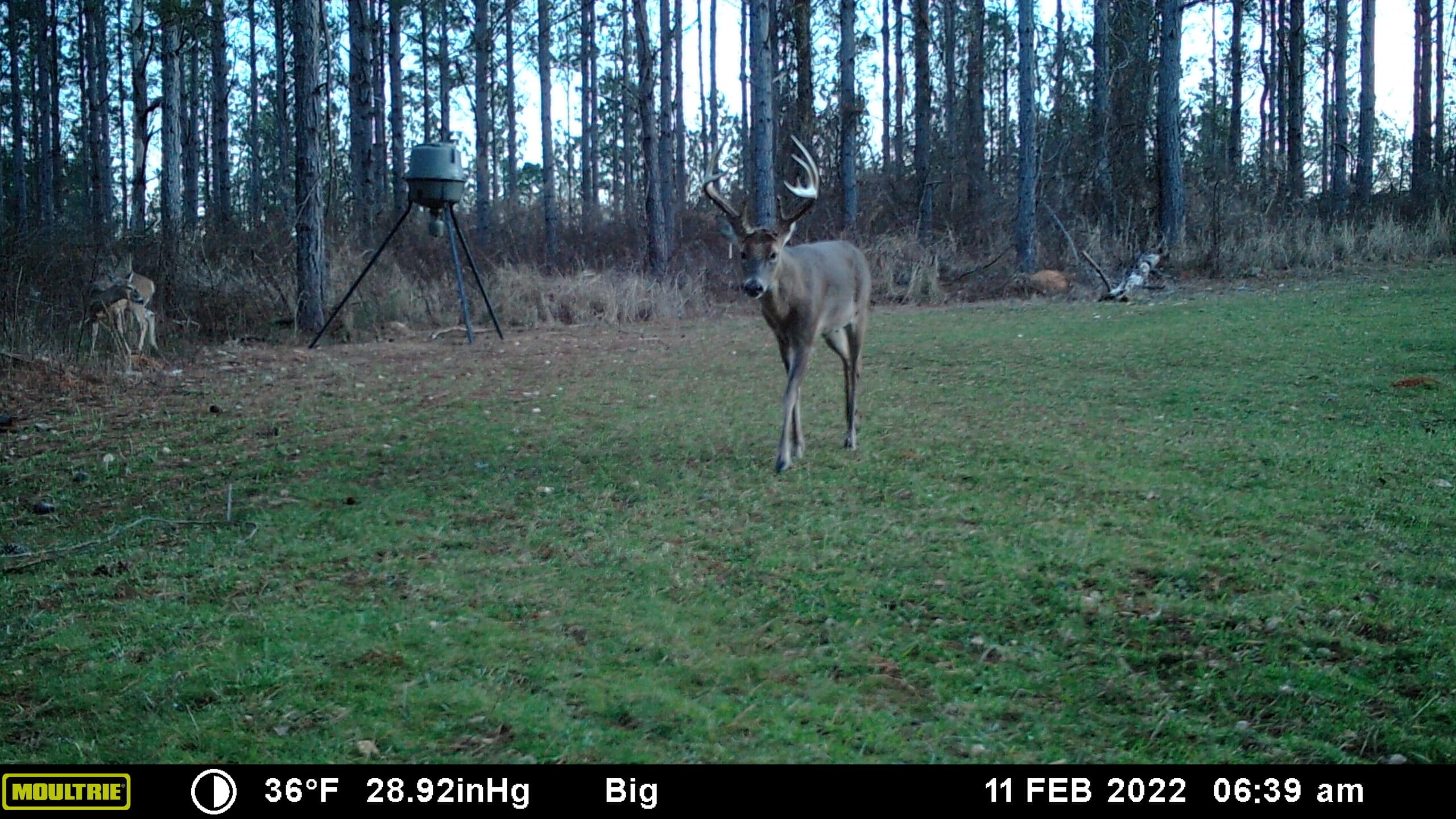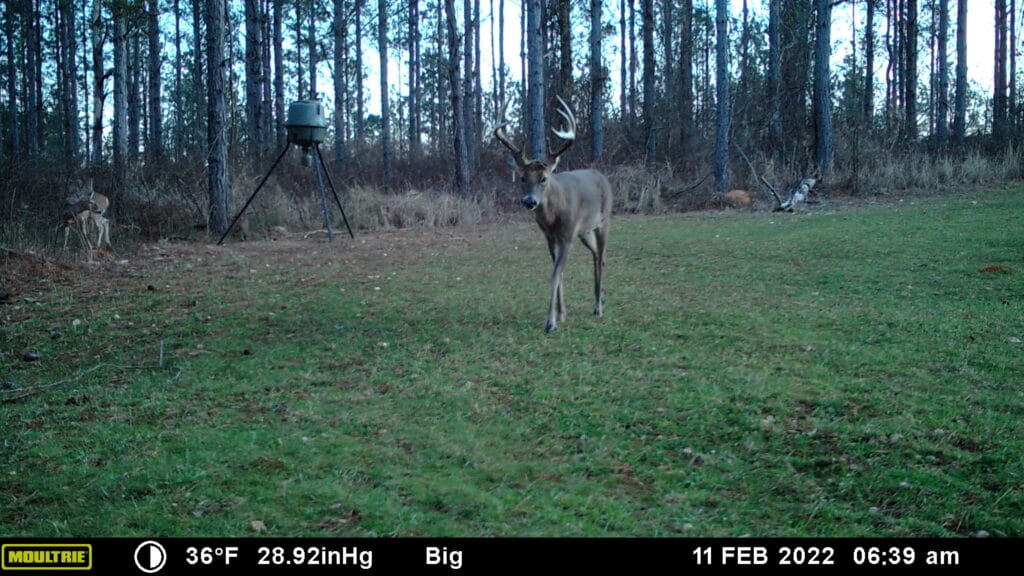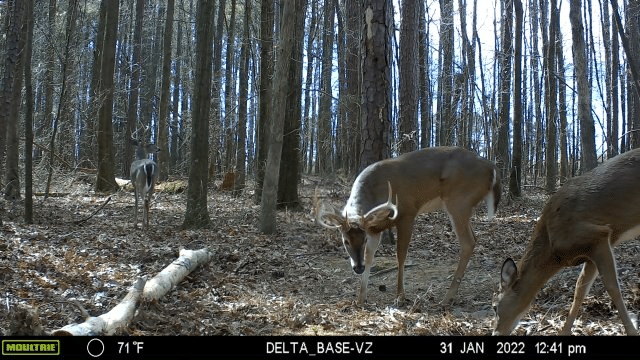While trail-camera technology has advanced tremendously over the past 20 years, the price has decreased, making them more affordable than ever. This allows deer hunters and landowners to add more to their collection each season. But how many trail cameras do you need to effectively monitor the animals on your hunting land? There’s no magic formula for this equation. Instead, the answer depends on several factors. Let’s look at the things to consider when deciding how many trail cameras to run on your property.

Food
If you have deer and turkey on your property, they are going to have to eat each day. So, let’s first think about where these animals are feeding to help decide the number of cameras. If you plant food plots where you hunt, then consider at least one camera per plot to see when and what time animals are accessing this food source. If you have plots that are several acres in size where animals can enter at varies locations, then you might consider two or more cameras per plot. Likewise, if you are running feeders then consider one camera per feeder. Also keep in mind seasonal food sources, such as acorns, persimmons, fruit trees, agricultural fields, etc.? If these food sources are present on your property, then you’ll want to have a few cameras available to place when these spots start to pull in deer and other target species. The more property you have with seasonal food sources, then the more cameras you’ll need to monitor activity in and around them.
Water
Water is another daily resource that deer and turkey will need. If you have a pond, creek or some other type of water source on your property, then do some scouting and look for tracks and sign where animals are utilizing it to drink. In core areas with the highest concentration of signs hang a camera to see when and what animals are coming and going.
Cover
 Deer need bedding areas to feel safe and to stay warm when temperatures plummet. Look for areas with thick grass and weeds, cutovers, grown-up homesteads and cedar thickets. The best time to enter these areas to scout, is after deer season and before the spring green-up. Look for heavily used trails, rubs and old scrapes. Specifically look for trails and rub lines that lead to food and water. These are excellent places to place a trail camera. Because deer are bedding in these areas, use a cellular camera with a solar panel or battery box so that you rarely need to visit the camera and disturb the deer.
Deer need bedding areas to feel safe and to stay warm when temperatures plummet. Look for areas with thick grass and weeds, cutovers, grown-up homesteads and cedar thickets. The best time to enter these areas to scout, is after deer season and before the spring green-up. Look for heavily used trails, rubs and old scrapes. Specifically look for trails and rub lines that lead to food and water. These are excellent places to place a trail camera. Because deer are bedding in these areas, use a cellular camera with a solar panel or battery box so that you rarely need to visit the camera and disturb the deer.
Travel Corridors
Travel corridors can be difficult to locate in large, forested areas but easier to find in agricultural spaces. Either way, look for terrain or tree lines that connect bedding cover and feeding areas or water holes. Travel corridors can also be a saddle in a ridge that makes it easier to cross over. Use the interactive map feature in your Moultrie Mobile app to locate pinch points and treelines that connect two large blocks of cover as well. When you investigate these locations look for rubs, scrapes and trails. If there is good sign on any of these locations, then place a trail camera for photos to see what’s passing through.
New Rubs and Scrapes
 It’s always a good idea to keep a few cameras sitting ready to go when the pre-rut is heating up. Whenever you notice new rub lines or scrape lines popping up in an area, place a camera on it to determine if a buck is moving through in the daylight hours. It might be the intel you need to score on a trophy.
It’s always a good idea to keep a few cameras sitting ready to go when the pre-rut is heating up. Whenever you notice new rub lines or scrape lines popping up in an area, place a camera on it to determine if a buck is moving through in the daylight hours. It might be the intel you need to score on a trophy.
Mock Scrapes
Another great spot to capture deer activity is on mock scrapes. Create a mock scrape in travel corridors or feeding areas to entice local bucks to use it and mark their own territory. Mock scrapes can be created in late summer to get bucks using them early and often. Map out your property and choose a few top locations to try and get inventory on as many bucks as you can.
As you can see, there is no magic number to how many cameras you should use. However, think about how many acres you have, how many travel corridors are there and where are the deer moving to and from. Then place as many cameras as needed to map out a game plan to successfully harvest deer where you hunt.








